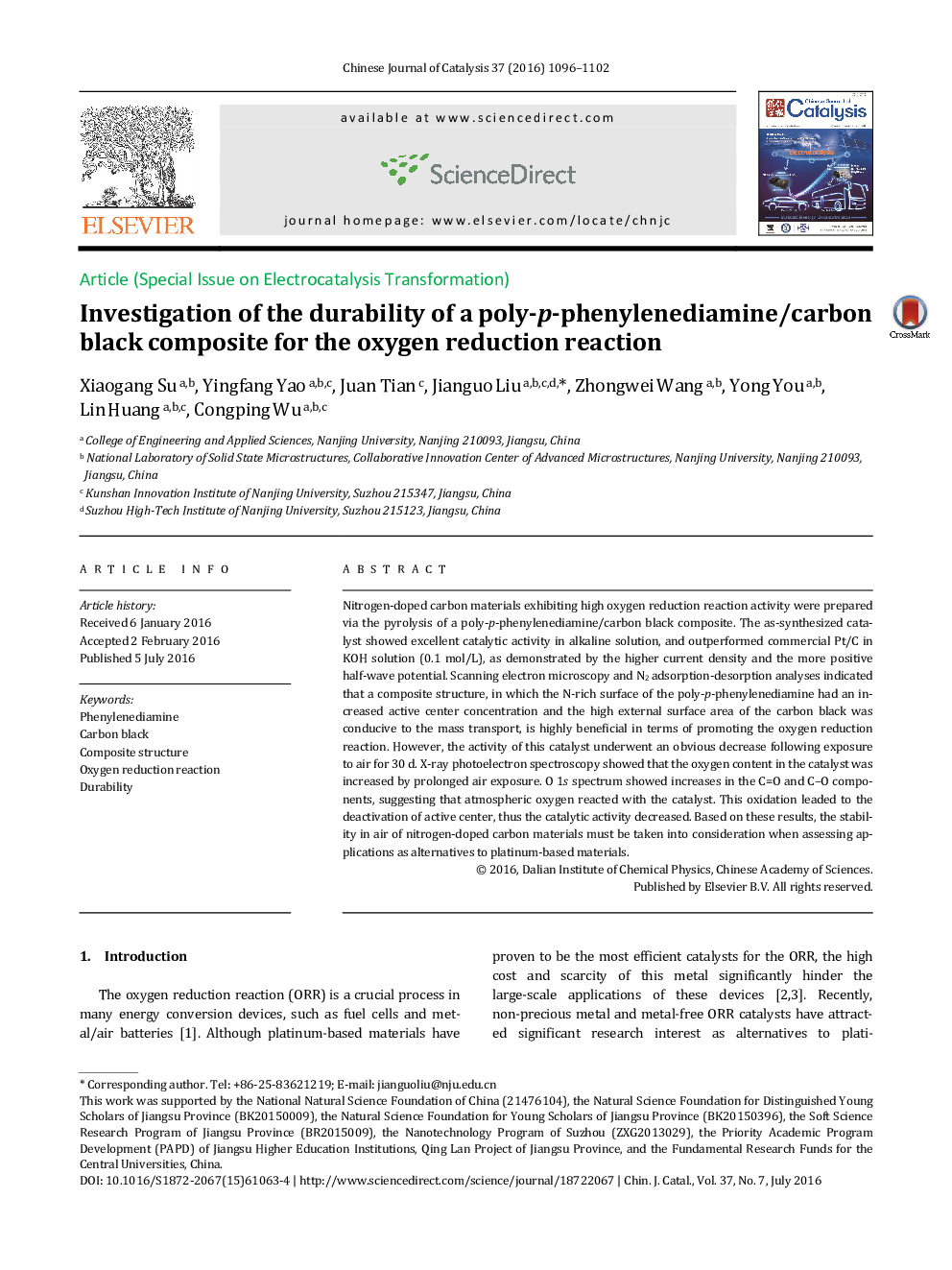| Article ID | Journal | Published Year | Pages | File Type |
|---|---|---|---|---|
| 59353 | Chinese Journal of Catalysis | 2016 | 7 Pages |
Nitrogen-doped carbon materials exhibiting high oxygen reduction reaction activity were prepared via the pyrolysis of a poly-p-phenylenediamine/carbon black composite. The as-synthesized catalyst showed excellent catalytic activity in alkaline solution, and outperformed commercial Pt/C in KOH solution (0.1 mol/L), as demonstrated by the higher current density and the more positive half-wave potential. Scanning electron microscopy and N2 adsorption-desorption analyses indicated that a composite structure, in which the N-rich surface of the poly-p-phenylenediamine had an increased active center concentration and the high external surface area of the carbon black was conducive to the mass transport, is highly beneficial in terms of promoting the oxygen reduction reaction. However, the activity of this catalyst underwent an obvious decrease following exposure to air for 30 d. X-ray photoelectron spectroscopy showed that the oxygen content in the catalyst was increased by prolonged air exposure. O 1s spectrum showed increases in the C=O and C–O components, suggesting that atmospheric oxygen reacted with the catalyst. This oxidation leaded to the deactivation of active center, thus the catalytic activity decreased. Based on these results, the stability in air of nitrogen-doped carbon materials must be taken into consideration when assessing applications as alternatives to platinum-based materials.
Graphical AbstractExposing a poly-p-phenylenediamine/carbon black composite to air allows oxygen to react with it, and this oxidation leads to increases in the C=O and C–O components, thus the catalytic activity decreases.Figure optionsDownload full-size imageDownload as PowerPoint slide
